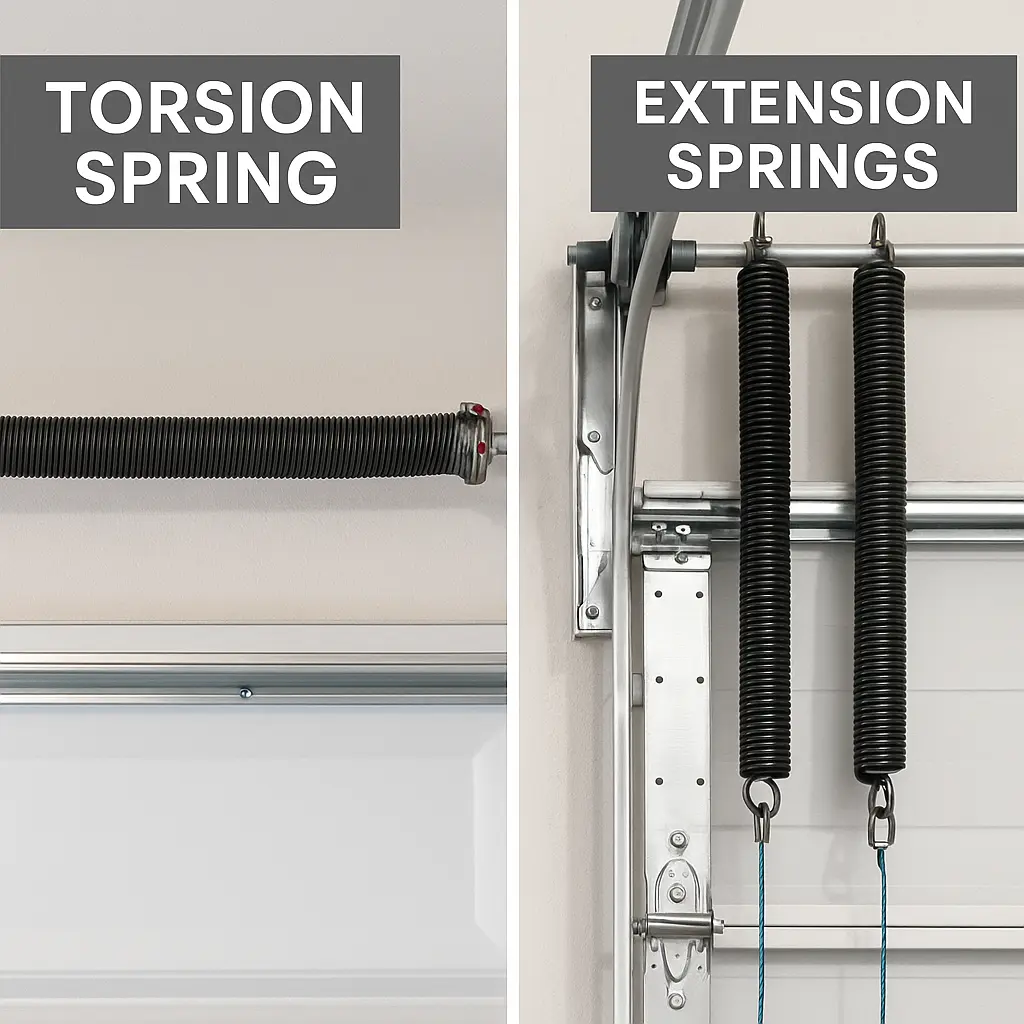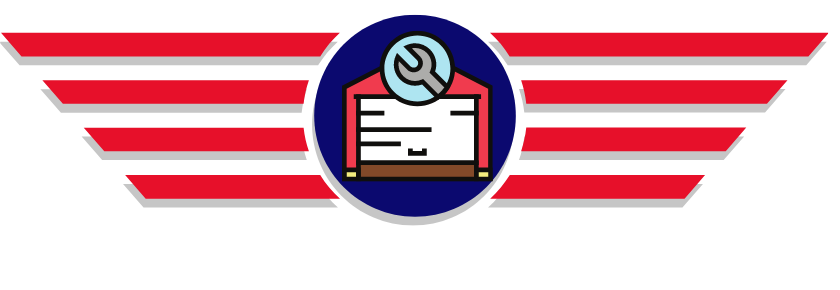Torsion vs Extension Garage Door Springs are the two most common types found in garage door systems. When comparing Torsion vs Extension Garage Door Springs, it’s important to know which type is right for your door.
They balance the heavy weight of the door, making it possible to lift safely and smoothly. Choosing between Torsion vs Extension Garage Door Springs can feel confusing, but knowing the worst mistakes helps homeowners make the right choice.
1. Choosing the Wrong Type of Spring
Not understanding how each spring works is a major mistake.
- Torsion springs sit above the door and use winding tension to lift heavy doors.
- Extension springs run along the sides, stretching and contracting with each cycle, better suited for lighter doors.
Mistake: Installing extension springs on a heavy door can cause rapid wear and serious safety risks. This often results in breakdowns at the worst possible time, leaving the door stuck open or shut.
2. Ignoring Durability and Lifespan
Torsion springs typically last 10,000–15,000 cycles, or 7–10 years.
Extension springs usually last 5,000–10,000 cycles, or 5–7 years.
Mistake: Choosing the cheaper option without considering lifespan. Frequent garage door spring replacement ends up costing more than investing in a durable system upfront. Many homeowners only realize this after paying for multiple replacements within a few years.
3. Overlooking Safety Features
Both spring systems carry significant tension, but their safety risks differ.
- Torsion springs can break with a loud snap and should always be serviced by a professional.
- Extension springs may fly apart when they snap unless equipped with safety cables.
Mistake: Skipping safety cables with side-mounted springs is one of the most dangerous oversights. A missing cable could turn a minor repair into a serious safety hazard for anyone in the garage.
4. Focusing Only on Cost
While torsion springs cost more, they last longer and perform better. Extension springs are more affordable upfront but wear out faster.
Mistake: Looking only at initial price often leads to higher long-term expenses from repeated repairs or replacements. Homeowners also forget to factor in labor costs—torsion systems may cost more to install, but the savings in fewer replacements usually outweigh the difference.
5. DIY Installation or Repair
Springs are under extreme tension, and both types can cause serious injury if handled incorrectly.
Mistake: Attempting DIY repair or installation is one of the worst errors. Online tutorials might make the process look simple, but a sudden snap can cause property damage or personal injury. Only a trained garage door repair technician should install or adjust springs. Professional service also ensures the system remains balanced, preventing uneven wear on other parts of the door.
6. Skipping Regular Maintenance
Regular upkeep extends the lifespan of both spring types:
- Lubricate to prevent rust.
- Inspect for cracks, stretching, or imbalance.
Mistake: Neglecting garage door maintenance leads to noisy operation, shortened lifespan, and possible breakdowns. Skipping a simple 10-minute lubrication routine can cut years off the life of your springs.
7. Not Matching the Spring to Door Usage
Different systems suit different needs:
- Torsion springs are ideal for heavy doors or frequent use.
- Extension springs are better for light doors with minimal traffic.
Mistake: Installing the wrong spring type for your door’s size or use causes premature wear and unreliable performance. Over time, this mismatch also adds strain to the opener, creating even more costly repairs.
Common Mistakes with Torsion vs Extension Garage Door Springs
When comparing Torsion vs Extension Garage Door Springs, homeowners often ignore key factors like safety features, durability, and long-term cost. Failing to account for these points leads to unnecessary repairs and frustration down the line.
How to Prevent Mistakes with Torsion vs Extension Garage Door Springs
Avoiding these errors comes down to three things: choosing the right spring, trusting professionals for installation, and committing to regular maintenance. Before deciding, always ask a technician to evaluate your door’s size, weight, and usage. Spending a little more upfront on the right system will save you years of frustration and unexpected costs.
Final Thoughts
Understanding the differences between Torsion vs Extension Garage Door Springs helps homeowners avoid expensive and unsafe mistakes. Whether it’s choosing the wrong type, skipping safety features, or neglecting garage door maintenance, each error shortens the life of your system.
For safe installation and reliable garage door spring replacement, always consult a professional. With the right springs and consistent care, your garage door will run smoothly, quietly, and safely for many years to come. Relying on experts for Torsion vs Extension Garage Door Springs ensures peace of mind and lasting performance.
For verified service details and exclusive offers, check out our profile on TouchAfro’s listing for Just Garage Door.


